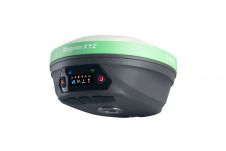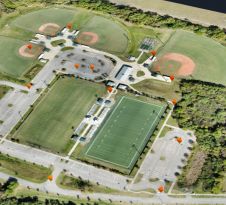Intelligence Fusion Through TML
Enabling sensor data for fusion to create ‘intelligence’ is the primary purpose of the OpenGIS Transducer Markup Language Implementation Specification (TML). TML has been approved by the Open Geospatial Consortium (OGC) membership and is in final editing prior to being released to the public as an international standard.
So Many Formats
The growing number, diversity and networkability of sensors are both help and a hindrance. On the positive side, more data is collected; on the negative side, more data is collected. Sensors, from simple to complex, routinely feed data to ‘downstream’ processors as the first step in the translation of raw data into intelligence by analysts and software programs. However, the sensor data is often hard to use because there are so many sensor data formats and so many proprietary tools. Thus ‘stove piping’ occurs, with sensors used in imagery, communications, weather, vehicles, machines and many other applications.
Compatibility
Data that will not integrate or fuse with other types of data is, for all practical purposes, lost. TML makes it possible to solve this problem. Steve Havens of Argon ST originally developed TML as a non-proprietary way to normalise sensor data and metadata. The US Air Force Research Laboratory at Wright Patterson AFB, in conjunction with the National Geospatial Intelligence Agency (NGA), the Open Geospatial Consortium (OGC), and Argon ST, collaborated to complete the development and standardisation of TML. Their work ensured, among other things, that temporal and spatial elements would be compatible among disparate sensors and across multiple domains.
Standard Encoding
TML uses eXtensible Mark up Language (XML), compatible with search engines and existing tools for visualisation and other purposes. XML, and thus TML, are readable by both humans and software. TML provides a common way to package any kind of sensor data for transport, archiving and processing, thereby enabling sensor data for fusion. Information becomes intelligence only with the addition of context and meaning. This requires standards; that is, agreement about what certain symbols mean. TML is a standard digital encoding for virtually everything related to sensors and transducers. TML provides a standard way to create, preserve and communicate metadata about the data. It makes it possible to give data (imagery, signals and measures) context and meaning.
Quick Fusion
As demonstrated in the US Air Force Laboratory’s (AFRL) 2006 Team Patriot exercise and in OGC’s OGC Web Services (OWS-3 and OWS-4) testbeds, TML makes it possible for multiple and disparate sensor data-streams to be readily fused, retained and smartly stored. TML enables intelligence professionals to quickly combine/fuse disparate data, review the resulting intelligence, make recommendations to decision-makers and, ultimately, improve the conditions for mission success.

Value staying current with geomatics?
Stay on the map with our expertly curated newsletters.
We provide educational insights, industry updates, and inspiring stories to help you learn, grow, and reach your full potential in your field. Don't miss out - subscribe today and ensure you're always informed, educated, and inspired.
Choose your newsletter(s)
























